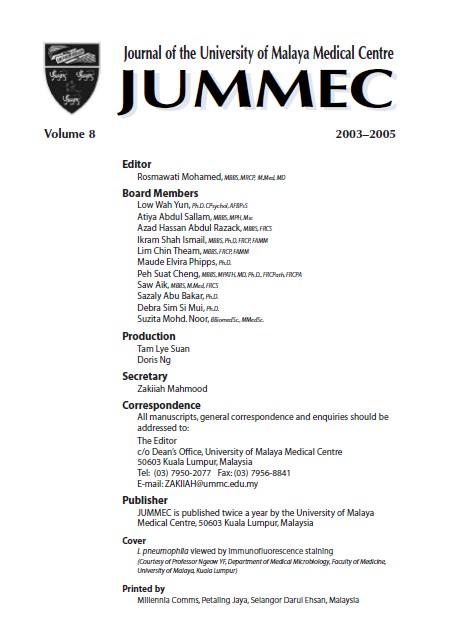CARDIOPULMONARY EXERCISE TESTING: UTILITY IN RESEARCH AND PATIENT CARE
Abstract
Cardiopulmonary exercise testing is a non-invasive physiological test
which incorporates the conventional method of exercise stress test with a more advanced breath-to-breath ventilatory analysis. The physiological parameters obtained from the test help to illustrate the cardiovascular, respiratory and metabolic responses to physical exertion. Individual's functional capacity and aerobic fitness is
reflected by the value of maximal oxygen consumption (VO2 max) obtained from the cardiopulmonary exercise test. This non-invasive and sophisticated test is regarded as a valuable assessment tool in research and clinical practice. Cardiopulmonary exercise test has been extensively utilized to define the mechanisms of exercise intolerance in
various clinical disorders, to evaluate responses to therapy and indicate disease prognosis. Emerging data obtained from the use of the cardiopulmonary exercise testing in the research field, has led to its extensive clinical usage. It is now utilized as an integral part of the patients' clinical evaluation in the field of respiratory and cardiovascular
medicine, sports medicine, surgery as well as occupational and rehabilitative medicine. It has a clinical role in assessing patient's functional capacity, monitoring disease progression and response to therapy, predicting prognosis, and perioperative morbidity and mortality, as well as constructing and monitoring training and rehabilitative programs. This article aims to give an overview of the physiological
profiles obtained from cardiopulmonary exercise testing, its methodological aspects, as well as its utility in research and clinical practice.
Downloads
Downloads
Published
Issue
Section
License
All authors agree that the article, if editorially accepted for publication, shall be licensed under the Creative Commons Attribution License 4.0 to allow others to freely access, copy and use research provided the author is correctly attributed, unless otherwise stated. All articles are available online without charge or other barriers to access. However, anyone wishing to reproduce large quantities of an article (250+) should inform the publisher. Any opinion expressed in the articles are those of the authors and do not reflect that of the University of Malaya, 50603 Kuala Lumpur, Malaysia.


